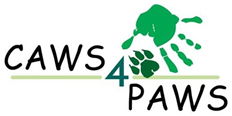Constitution
CONSTITUTION
1. Name
1.1 The organisation hereby constituted will be called CAWS 4 PAWS
1.2 Its shortened name will be C4P (hereinafter referred to as the organisation).
1.3 Body corporate
The organisation shall:
. Exist in its own right, separately from its members.
. Continue to exist even when its membership changes and there are different office bearers.
. Be able to own property and other possessions.
. Be able to sue and be sued in its own name.
2. Objectives
(a) The organisation’s main objectives are to provide services to the community to assist in alleviation of suffering of animals.
(b) The organisation’s secondary objectives will be to work in conjunction with established organisations such as the SPCA and any other such organisation with similar objectives.
3. Income and property
3.1 The organisation will keep a record of everything it owns.
3.2 The organisation may not give any of its money or property to its members or office bearers.
The only time it can do this is when it pays for work that a member or office bearer has done for the organisation. The payment must be a reasonable amount for the work that has been done.
3.3 A member of the organisation can only get money back from the organisation for expenses that she or he has paid for or on behalf of the organisation.
3.4 Members or office bearers of the organisation do not have rights over things that belong to the organisation.
4. Membership and General Meetings
4.1 If a person wants to become a member of the organisation, she or he will have to ask the organisation’s management committee. The management committee has the right to say no.
4.2 Members of the organisation must attend its annual general meetings. At the annual general meeting members exercise their right to determine the policy of the organisation.
5. Management
5.1 A management committee will manage the organisation. The management committee will be made up of not less than 3 members. They are the office bearers of the organisation.
5.2 Office bearers will serve for one year, but they can stand for re-election for another term in office after that. Depending on what kind of services they give to the organisation, they can stand for re-election into office again and again. This is so long as their services are needed and they are willing to offer their services.
5.3 If a member of the management committee does not attend three management committee meetings in a row, without having applied for and obtaining leave of absence from the management committee, then the management committee will find a new member to take that person’s place.
5.4 The management committee will meet when a majority of the management committee decide a meeting is required, but this must happen at least twice annually. More than half of members need to be at the meeting to make decisions that are allowed to be carried forward. This constitutes a quorum.
5.5 Minutes will be taken at every meeting to record the management committee’s decisions. The minutes of each meeting will be given to management committee members at least two weeks before the next meeting. The minutes shall be confirmed as a true record of proceedings, by the next meeting of the management committee, and shall thereafter be signed by the chairperson.
5.6 The organisation has the right to form sub-committees. The decisions that sub-committees take must be given to the management committee. The management committee must decide whether to agree to them or not at its next meeting. This meeting should take place soon after the sub-committee’s meeting. By agreeing to decisions the management committee ratifies
them.
5.7 All members of the organisation have to abide by decisions that are taken by the management committee.
6. Powers of the organisation
The management committee may take on the power and authority that it believes it needs to be able to achieve the objectives that are stated in point number 2 of this constitution. Its activities must abide by the law.
6.1 The management committee has the power and authority to raise funds or to invite and receive contributions.
6.2 The management committee does, however, have the power to buy, hire or exchange for any property that it needs to achieve its objectives.
6.3 The management committee has the right to make by-laws for proper management, including procedure for application, approval and termination of membership.
6.4 Organisations will decide on the powers and functions of office bearers.
7. Meetings and procedures of the committee
7.1 The management committee must hold at least two ordinary meetings each year.
7.2 The chairperson, or two members of the committee, can call a special meeting if they want to. But they must let the other management committee members know the date of the proposed meeting not less than 21 days before it is due to take place. They must also tell the other members of the committee which issues will be discussed at the meeting. If, however, one of the matters to be discussed is to appoint a new management committee member, then those
calling the meeting must give the other committee members not less than 30 days notice.
7.3 The chairperson shall act as the chairperson of the management committee. If the chairperson does not attend a meeting, then members of the committee who are present choose which one of them will chair that meeting. This must be done before the meeting starts.
7.4 There shall be a quorum whenever such a meeting is held.
7.5 When necessary, the management committee will vote on issues. If the votes are equal on an issue, then the chairperson has either a second or a deciding vote.
7.6 Minutes of all meetings must be kept safely and always be on hand for members to consult.
7.7 If the management committee thinks it is necessary, then it can decide to set up one or more sub-committees. It may decide to do this to get some work done quickly. Or it may want a sub-committee to do an inquiry, for example. There must be at least three people on a subcommittee. The sub-committee must report back to the management committee on its activities. It should do this regularly.
8. Annual general meetings
The annual general meeting must be held once every year, towards the end of the organisation’s financial year. The organisation should deal with the following business, amongst others, at its annual general meeting:
· Agree to the items to be discussed on the agenda.
· Write down who is there and who has sent apologies because they cannot attend.
· Read and confirm the previous meeting’s minutes with matters arising.
· Chairperson’s report.
· Treasurer’s report.
· Changes to the constitution that members may want to make.
· Elect new office bearers.
· General.
· Close the meeting.
9. Finance
9.1 An accounting officer shall be appointed at the annual general meeting. His or her duty is to audit and check on the finances of the organisation.
9.2 The treasurer’s job is to control the day to day finances of the organisation. The treasurer shall arrange for all funds to be put into a bank account in the name of the organisation. The treasurer must also keep proper records of all the finances.
9.3 Whenever funds are taken out of the bank account, at least two members of the management committee must sign/authorise the withdrawal or cheque.
9.4 The financial year of the organisation ends on the last day of February each year.
9.5 The organisation’s accounting records and reports must be ready and handed to the Director of Non-profit Organisations within six months after the financial year end.
9.6 If the organisation has funds that can be invested, the funds may only be invested with registered financial institutions. These institutions are listed in Section 1 of the Financial Institutions (Investment of Funds) Act, 1984. Or the organisation can get securities that are listed on a licensed stock exchange as set out in the Stock Exchange Control Act, 1985. The organisation can go to different banks to seek advice on the best way to look after its funds.
10. Changes to the constitution
10.1 The constitution can be changed by a resolution. The resolution has to be agreed upon and passed by not less than two thirds of the members who are at the annual general meeting or special general meeting. Members must vote at this meeting to change the constitution.
10.2 Two thirds of the members shall be present at a meeting (“the quorum”) before a decision to change the constitution is taken. Any annual general meeting may vote upon such a notion, if the details of the changes are set out in the notice referred to in 7.3
10.3 A written notice must go out not less than fourteen (14) days before the meeting at which the changes to the constitution are going to be proposed. The notice must indicate the proposed changes to the constitution that will be discussed at the meeting.
10.4 No amendments may be made which would have the effect of making the organisation cease to exist.
11. Dissolution/Winding-up
11.1 The organisation may close down if at least two-thirds of the members present and voting at a meeting convened for the purpose of considering such matter, are in favour of closing down.
11.2 When the organisation closes down it has to pay off all its debts. After doing this, if there is property or money left over it should not be paid or given to members of the organisation. It should be given in some way to another non-profit organisation that has similar objectives. The organisation’s general meeting can decide what organisation this should be.
This constitution was approved and accepted by members of
CAWS 4 PAWS At a special (general) meeting held on 2 April 2013


